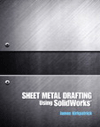Today’s HVAC brands face a unique set of challenges. Not only is equipment subject to new energy efficiency requirements, but the market and workforce are also changing. With the right approach and preparation, companies can turn these challenges into growth opportunities. The bright side is that business is there for the taking. To come out on top, though, your organization should ask, “Are we ready for the future?” If you can't answer “yes,” channel incentive and marketing programs can give your confidence and capabilities a boost.
Before looking at the ways you can prepare for the changing conditions of the HVAC industry, let’s examine those conditions more closely. There are three major factors defining the “new normal” of HVAC:
- Efficiency Targets & Requirements — The U.S. is phasing out hydrofluorocarbon (HFC) refrigerants due to their high global warming potential (GWP). In 2016, The Montreal Protocol called for an 85% reduction in HFC usage by 2036. In response, many states are regulating refrigerants.
Some of the most common, low-GWP refrigerant alternatives are A2Ls and A3s. Because these alternatives are classified as mildly flammable and flammable, state and local building codes will need to be updated to permit them. This could put HVAC companies in an unfortunate position, unable to install new systems until codes are updated —meanwhile, HFC reduction deadlines get closer. Organizations such as the Air-Conditioning, Heating, and Refrigeration Institute (AHRI) will likely petition governments for extensions to ensure a safe, timely transition, but companies that plan ahead for the shift will have an advantage over the competition.
- Rising Demand — Changes in global temperatures and income levels are expected to drive increased demand for air conditioning. A study published in Science Direct anticipates that, in 16 countries, “households with air conditioning will increase from 35% in 2020 to 55% in 2050. We find that both income and climate matter for these projections, but that income matters much more, explaining 85% of the growth in air conditioning by 2050.”
- Labor Shortage — Compounding both the above issues, the HVAC industry is experiencing a labor shortage. Even in 2018, HVAC was expected to see a 15% increase in jobs created while facing baby boomer retirement and too few incoming hires to replace them. Since then, the pandemic sped up retirement and caused The Great Resignation. Brands will need to find more ways to train up new hires, while retaining workers as long as possible.
With these three challenges impacting the industry, HVAC companies will need to implement plans that keep them relevant and competitive. Using channel marketing and incentive programs, HVAC brands can motivate, educate, and retain workforces in the following ways:
Provide High-Quality Content
Information access will be increasingly important to HVAC professionals in the coming years. Which governments have just ratified new building codes? Which areas are behind in meeting regulatory deadlines? Channel partners will need to know these things to meet market demands. Your content marketing should include industry news and thought leadership, not just product promotions. Working with a through-channel marketing program provider who offers content marketing services will help you expand and personalize your content’s reach and keep all your channel partners informed on the topics relevant to them.
Reinforce Training with Rewards
Encourage your channel partners to attend webinars, earn certifications, or complete courses by offering them exciting incentives such as debit/gift cards or reward points they can spend in an online merchandise catalog. Rewards can make training more engaging while elevating the sense of accomplishment. Incentives help you deliver necessary education efficiently, while nurturing an exciting and emotional context around learning. Don’t underestimate the power of a positive approach.
Learn Together at Corporate Events

Working and learning together will help HVAC companies respond more efficiently to industry changes and demands. By hosting group incentive trips or corporate events focused on training and learning, you can build up the spirit of collaboration while engaging channel partners. Studies show that interaction and positive environments both help improve the learning process.
Use Non-Cash Sales Incentives
The most direct way to sell more low-GWP HVAC units is to reward channel partners for doing so with sales incentives. Incentives are most effective when they’re tangible, non-cash rewards. This is because people often come to view cash rewards as an entitlement, like salary. Additionally, incentive program participants tend to spend cash rewards on necessities, such as bills and groceries. Comparatively, points-based and debit/gift card programs allow partners to spend rewards on fun things including vacation accommodations, electronics, home goods, or event and movie tickets. Exciting, engaging rewards will encourage channel partners to sell more units to meet the demands of low-GWP transition.
Collect More Sales and Customer Data
To verify they’ve earned their rewards, channel partners can submit sales claims to your incentive program. You can make this easier for them by providing an online document upload tool that allows them to snap a pic of an invoice, receipt, or warranty registration right from the field. Using this data, you can keep better track of updated systems, so you know where to focus your resources for more effective channel marketing and sales strategies.
Conclusion
Changing regulations, workforce availability, and market demands mean that HVAC companies will have to come up with new sales and marketing strategies. Companies that don’t adapt will risk falling behind the competition. In order to thrive, a motivated and well-informed distribution channel will be essential.
So, what will motivate your channel? Work that is meaningful, collaborative, and gratifying. Channel incentives and marketing can help you energize channel partners and cultivate a positive outlook on the industry’s future. Celebrate successes together with engaging educational opportunities and exciting rewards. That’s how you nurture and retain a channel that’s motivated, productive, and ready for the future.











